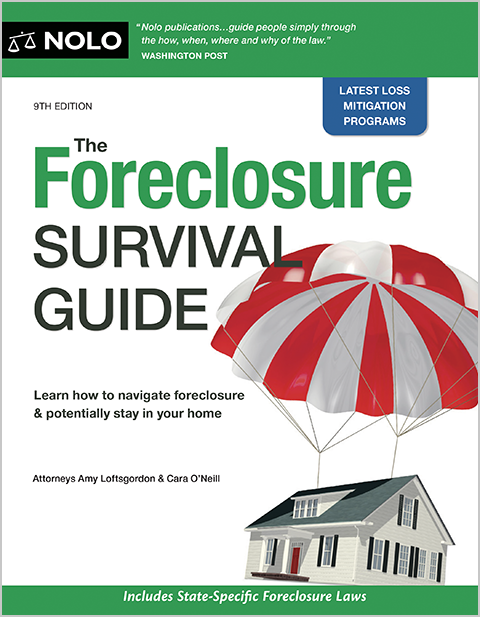The ability-to-repay rule requires mortgage lenders to ensure a borrower can afford a mortgage before making the loan.
The ability-to-repay rule, a critical part of the Dodd-Frank Wall Street Reform and Consumer Protection Act, protects borrowers in mortgage lending transactions. This rule says lenders must diligently assess a borrower's financial capability to repay a mortgage before making the loan.
- What Is the Ability-to-Repay Rule?
- Why Was the Ability-to-Repay Rule Created?
- What Factors Does the Ability-to-Repay Rule Consider?
- What Are the Exceptions to the Ability-to-Repay Rule?
- Qualified Mortgages Are Presumed to Comply with the Ability-to-Repay Rule
- What Are the Consequences of Violating the Ability-to-Repay Rule?
- How Can I Protect Myself From a Loan Denial Because of the Ability-to-Repay Rule?
- How Can I Protect Myself From Violations of the Ability-to-Repay Rule?
- What Are My Rights Under the Ability-to-Repay Rule?
- For More Information on the Ability-to-Repay Rule
What Is the Ability-to-Repay Rule?
The ability-to-repay rule (12 C.F.R. § 1026.43(c)) generally requires lenders to make a reasonable good faith determination of the consumer's ability to repay a residential mortgage before making the loan. Under this rule, a lender must consider a borrower's income, employment status, credit history, and other relevant factors to determine whether the borrower can repay the debt.
The lender can't use an introductory or "teaser" rate to determine the borrower's ability to meet the terms of the loan agreement. So, if a mortgage loan has a low interest rate that could rise at some point (for example, an adjustable-rate loan), the lender must make a reasonable effort to determine if the borrower can make the higher payments too.
Why Was the Ability-to-Repay Rule Created?
The ability-to-repay rule was implemented in response to the 2008 financial crisis.
The 2008 Financial Crisis
In the early 2000s, lenders often gave out mortgages without giving a second thought as to whether borrowers could actually afford the payments. Lenders regularly skipped verifying the borrowers' incomes and, in many cases, offered low initial teaser interest rates that would eventually adjust and lift the monthly payments to an unaffordable level.
These actions contributed to the subsequent mortgage crisis when thousands of homeowners fell behind in payments and went into foreclosure, which ultimately led the country into a recession.
Dodd-Frank Wall Street Reform and Consumer Protection Act
Congress responded by passing the Dodd-Frank Wall Street Reform and Consumer Protection Act (the Dodd-Frank Act). This law gave the Consumer Financial Protection Bureau (CFPB) the authority to implement the new requirements of the Dodd-Frank Act and adopt new rules to protect consumers in mortgage transactions.
In part, the rules set out an "ability-to-repay" requirement for virtually all closed-end residential mortgage loans. (A "closed-end loan" is a loan that must be repaid in full by a specified date.)
What Factors Does the Ability-to-Repay Rule Consider?
The ability-to-repay rule provides eight specific factors that the lender must consider to make a reasonable, good-faith determination that the borrower has a reasonable ability to repay the loan. Those factors are:
- the borrower's current or reasonably expected income or assets (excluding the property that secures the loan) that the borrower will rely on to repay the loan
- the borrower's current employment status and income, which must be verified
- the mortgage loan payment amount
- any payments on simultaneous loans that are secured by the same property, like second mortgages
- ongoing expenses related to the mortgage loan or the property, such as property taxes, insurance, HOA dues, and ground rent
- other debt obligations, like alimony and child support payments
- monthly debt-to-income ratio or residual income, and
- the consumer's credit history, which the lender must verify. (12 C.F.R. §1026.43).
The rule doesn't restrict the lender from considering additional factors if it so chooses.
What Are the Exceptions to the Ability-to-Repay Rule?
Here are some situations when the lender doesn't have to comply with the ability-to-repay rule.
Refinancing Interest-Only and Negative Amortization Loans
Under certain circumstances, the lender doesn't have to comply with the ability-to-repay rule if it is refinancing a borrower from a risky mortgage, such as an interest-only loan (when you pay only the interest without paying down the principal) or a negative amortization loan (when the loan principal increases over time, even though you're making payments) to a more stable one, such as a fixed-rate mortgage.
So, it's easier for lenders to help borrowers who have adjustable-rate, interest-only, or negative-amortization loans refinance into a standard mortgage.
Other Exceptions
While the rule applies to most mortgages, it doesn't apply to:
- open-end credit plans, like home equity lines of credit
- timeshare plans
- reverse mortgages
- temporary or bridge loans (those with terms of 12 months or less with possible renewal)
- a construction phase of 12 months or less (with possible renewal) of a construction-to-permanent loan and
- consumer credit transactions secured by vacant land.
Certain creditors, such as particular nonprofit organizations and loan programs, are also exempt from the rule.
Qualified Mortgages Are Presumed to Comply with the Ability-to-Repay Rule
Evaluating a borrower's ability to repay is complicated and can result in significant liability for lenders if they get it wrong. So, the ability-to-repay rule protects lenders from such liability when making "qualified mortgages." The rule presumes that a lender who makes a qualified mortgage has met the requirements of the ability-to-repay rule.
Qualified mortgages generally don't have the risky mortgage features that contributed to the mortgage crisis. For example, qualified mortgages typically can't have:
- an interest-only period
- negative amortization
- a balloon payment (a large payment at the end of the loan term) in most circumstances, or
- a loan term longer than 30 years.
What Are the Consequences of Violating the Ability-to-Repay Rule?
With this rule, you would think that lenders wouldn't give out loans to borrowers who can't afford them, but that might not always be true. Fortunately, remedies are in place.
Filing an Action for Damages
If you take out a mortgage and subsequently have difficulty repaying the loan, you could bring an action seeking to recover damages, alleging your lender failed to make a reasonable, good-faith determination of your ability to repay before giving you the loan (assuming no sudden and unexpected job or income loss happened after the loan origination and that it's a mortgage covered by the rule). You must file your action within three years of the violation. (15 U.S. Code § 1640(e)).
Penalties for Violations of the Ability-to-Repay Rule
A violation of the ability-to-repay provisions can result in damages under the Truth in Lending Act (TILA) of actual damages, statutory damages, costs, and attorneys' fees. The damages can include an amount equal to the sum of all finance charges and fees the borrower paid unless the lender shows that the failure to comply was not material. (15 U.S. Code § 1640, 15 U.S. Code § 1639(h)).
Defense to Foreclosure
If you raise a violation of the ability-to-repay rule as a defense to a foreclosure action, the lender could be liable for certain penalties and damages, as well as attorneys' fees. (A three-year statute of limitations applies to ability-to-repay claims brought as affirmative cases, but no time limit applies on raising this as a defense to foreclosure, although the amount of recoupment or setoff is limited.)
How Can I File a Complaint Against a Lender for Violating the Ability-to-Repay Rule?
You could also file a complaint against the lender with the CFPB. The CFPB will send your complaint directly to the lender for review. Most companies respond in 15 days.
How Can I Protect Myself From a Loan Denial Because of the Ability-to-Repay Rule?
To ensure you don't have issues with the ability-to-repay rule when applying for a mortgage loan, you should begin by thoroughly assessing your financial circumstances before you even look for a loan. Consider your income, expenses, and overall financial situation so you won't even apply for a mortgage you can't afford.
How Can I Protect Myself From Violations of the Ability-to-Repay Rule?
Carefully review all loan paperwork before signing it. Make sure you understand the terms, such as the interest rate, fees, and any potential risks associated with the loan, like an interest rate that might adjust. Ask for clarification if you have any questions or concerns about whether you'll be able to manage making the payments.
What Are My Rights Under the Ability-to-Repay Rule?
You have certain rights under the ability-to-repay rule. First, in the lending process, you have the right to go through a fair assessment of your capability to repay a loan. A lender must evaluate your entire financial circumstances to ensure they don't burden you with a mortgage loan you can't afford.
Again, you have the right to file a complaint with the CFPB if you think a lender didn't evaluate your ability to repay fairly. To complain about a lender's determination of your ability to repay, gather all relevant documentation that supports your position, including proof of income, your job status, or other financial factors you think the lender didn't appropriately consider.
You also have the right to file a lawsuit for violations of the ability-to-repay rule or use violations as a defense against foreclosure.
For More Information on the Ability-to-Repay Rule
To learn more, go to the CFPB's website and search for "Ability to Repay and Qualified Mortgage Standards Under the Truth in Lending Act (Regulation Z)." Then follow the link.
- What Is the Ability-to-Repay Rule?
- Why Was the Ability-to-Repay Rule Created?
- What Factors Does the Ability-to-Repay Rule Consider?
- What Are the Exceptions to the Ability-to-Repay Rule?
- Qualified Mortgages Are Presumed to Comply with the Ability-to-Repay Rule
- What Are the Consequences of Violating the Ability-to-Repay Rule?
- How Can I Protect Myself From a Loan Denial Because of the Ability-to-Repay Rule?
- How Can I Protect Myself From Violations of the Ability-to-Repay Rule?
- What Are My Rights Under the Ability-to-Repay Rule?
- For More Information on the Ability-to-Repay Rule

